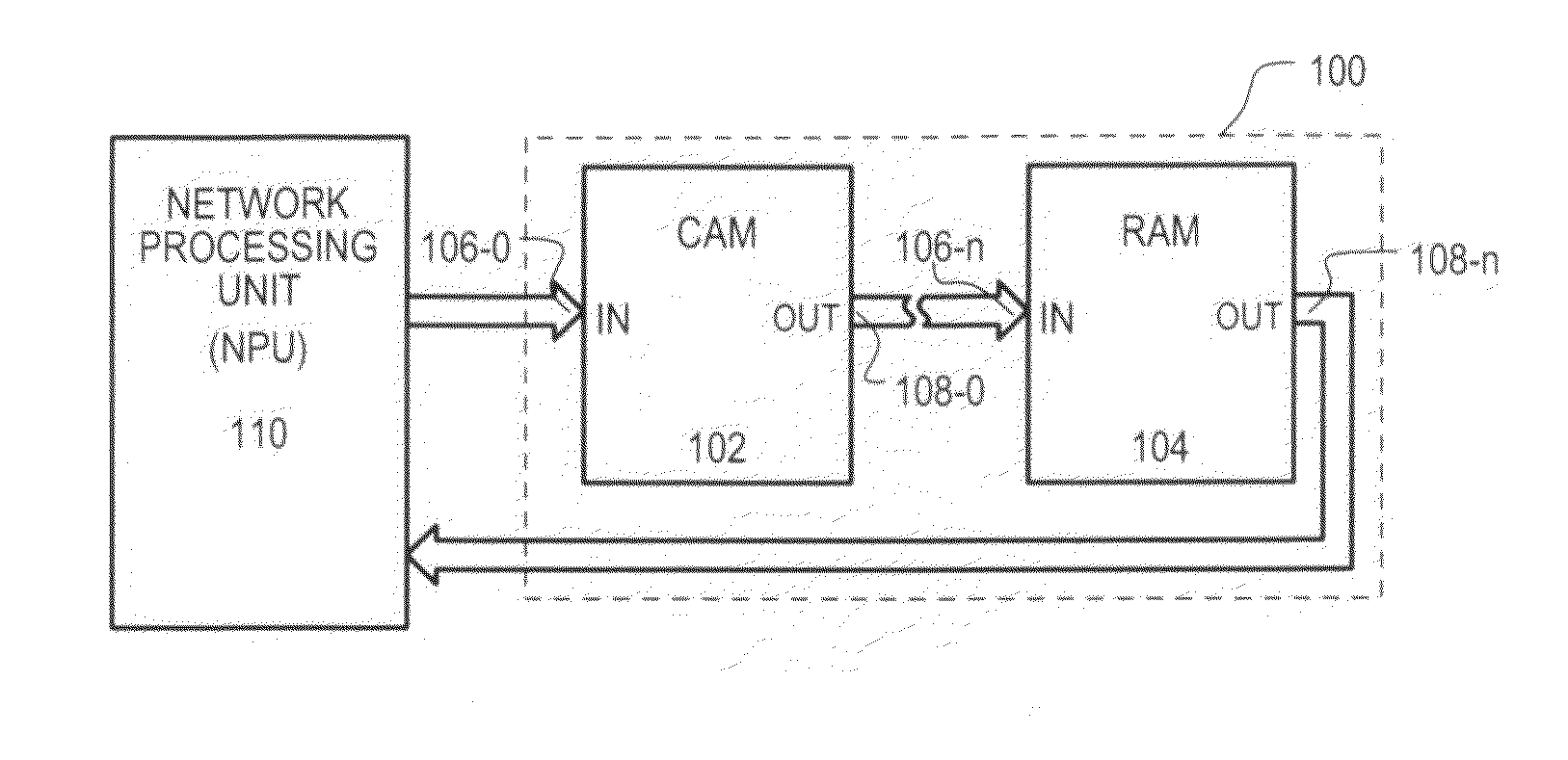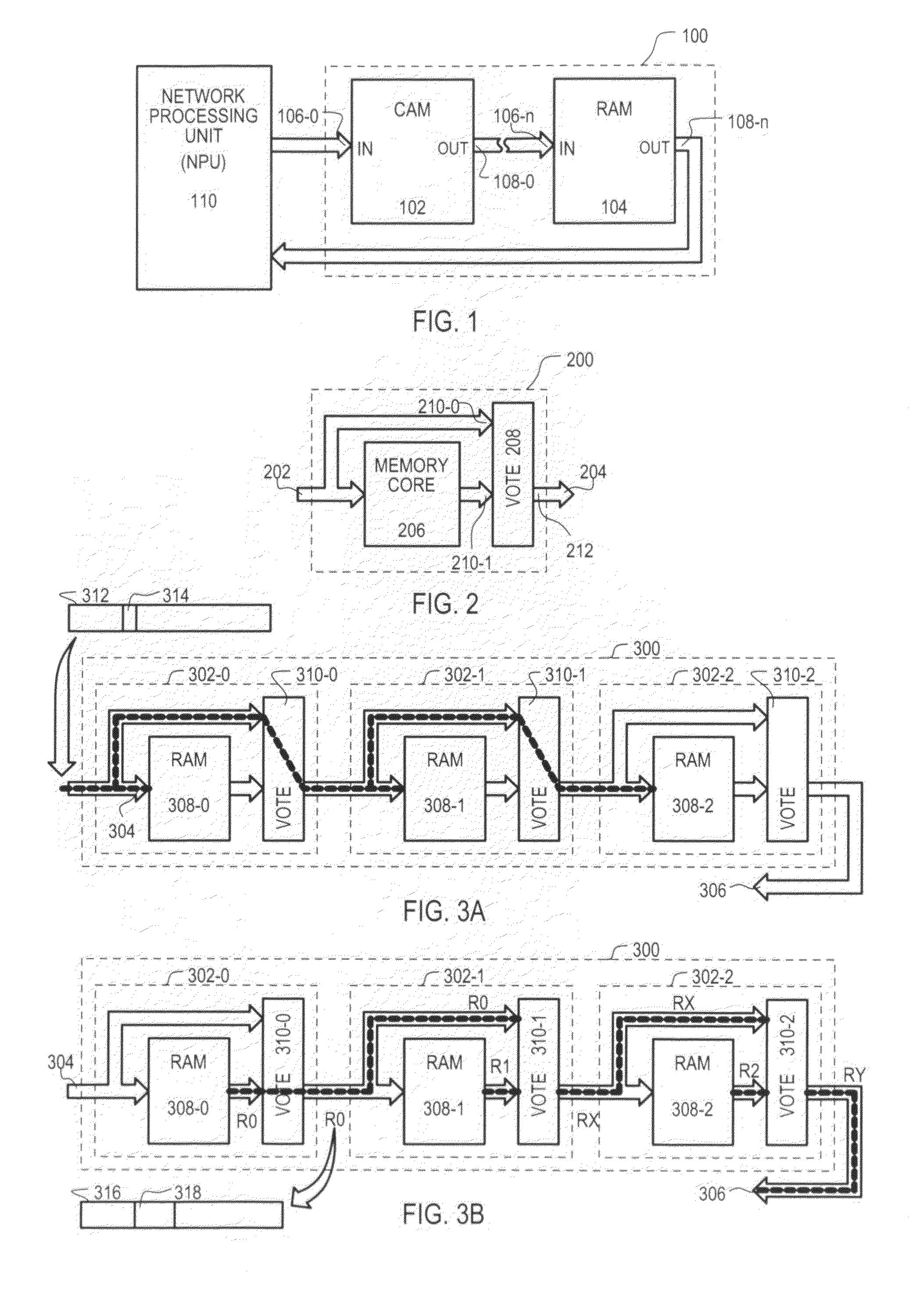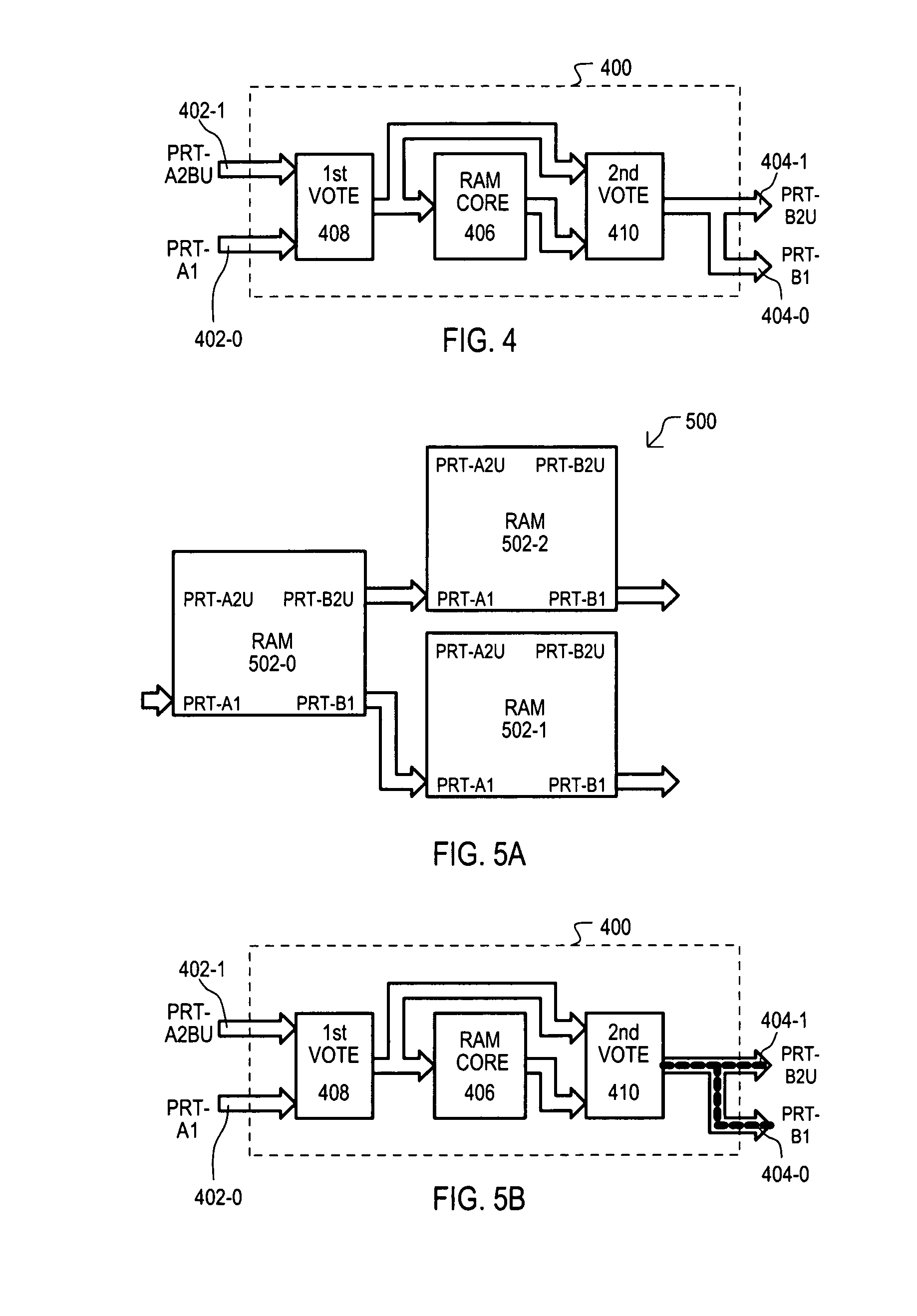Random access memory (RAM) method of operation and device for search engine systems
a search engine and random access memory technology, applied in the field of random access memory (ram) for search engine systems, can solve the problems of increasing component cost, complex connection and/or lack of uniformity of connection to such ram devices, and increasing the difficulty of layout chip select lines
- Summary
- Abstract
- Description
- Claims
- Application Information
AI Technical Summary
Benefits of technology
Problems solved by technology
Method used
Image
Examples
first embodiment
[0086]Referring now to FIG. 2, one example of a memory device is shown in FIG. 2 and designated by the general reference character 200. A memory device 200 may include an input port 202 as described above, an output port 204 as described above, a memory core portion 206, and a vote portion 208.
[0087]A memory core portion 206 may include circuits for performing one or more memory related functions. Such memory related functions may include read operations and write operations. In addition, memory related functions may include various operations that may be performed on data within such a memory device. Such operations may include setting a bit (e.g., setting to a logical “1”), clearing of a bit (e.g., setting to a logical “0”), incrementing a stored value, or decrementing a stored value. In addition, or alternatively, such operations can be an arithmetic / logic operation between a supplied value and a data value. In a preferred embodiment, arithmetic / logic operations may include a Bo...
second embodiment
[0094]Referring now to FIGS. 3A and 3B an example of a system is set forth in a block diagram and designated by the general reference character 300. In the particular example of FIGS. 3A and 3B, a system 300 can include three memory devices 302-0 to 302-2 arranged in a single serial cascade. Thus, memory device 302-0 may be a memory device and include an input port 304 that may receive requests. Similarly, a memory device 302-2 may be a last device and include an output port 306 that may provide a request or a response.
[0095]Each memory device (302-0 to 302-2) can have the same general structure as that shown in FIG. 2. Thus, memory devices 302-0 to 302-2 may include memory core portions 308-0 to 308-2, respectively, and vote portions 310-0 to 310-2, respectively.
[0096]FIG. 3A shows a request flow for a system 300. In particular, a flow for a received request 312 is represented by a bold and dashed line. As shown in FIG. 3A, a request 312 may be received by a first memory device 30...
PUM
 Login to View More
Login to View More Abstract
Description
Claims
Application Information
 Login to View More
Login to View More - R&D
- Intellectual Property
- Life Sciences
- Materials
- Tech Scout
- Unparalleled Data Quality
- Higher Quality Content
- 60% Fewer Hallucinations
Browse by: Latest US Patents, China's latest patents, Technical Efficacy Thesaurus, Application Domain, Technology Topic, Popular Technical Reports.
© 2025 PatSnap. All rights reserved.Legal|Privacy policy|Modern Slavery Act Transparency Statement|Sitemap|About US| Contact US: help@patsnap.com



